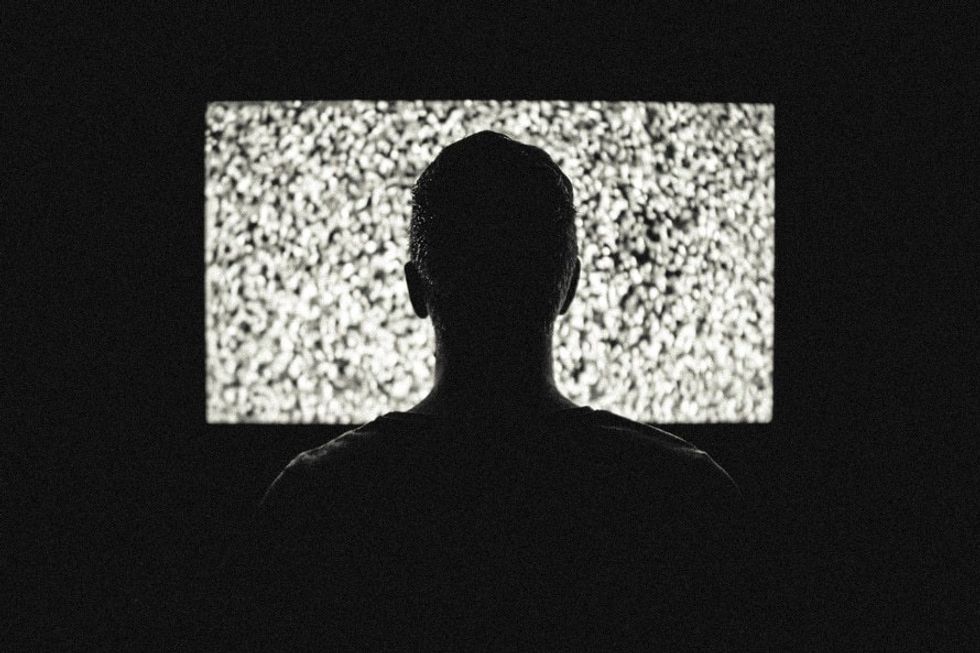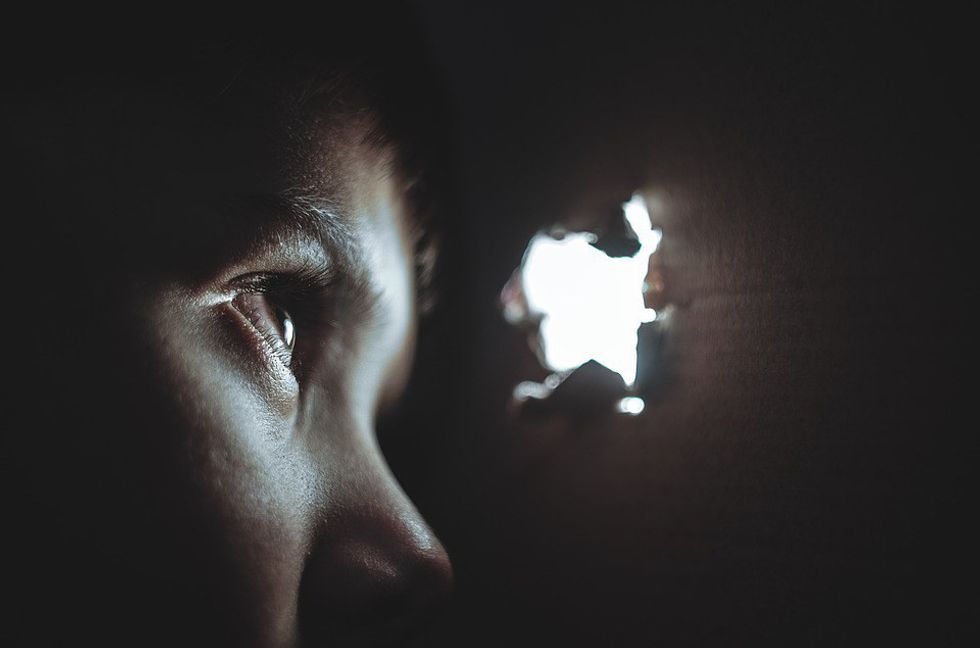These days it seems like everyone has something going on, whether it's a slight case of butterflies before giving a speech, social anxiety, depression, or other mental illnesses that affect our day to day lives. Anyone who utilizes social media and is affected by a mental ailment of some sort has seen the phrase, "Trigger Warning." It's time to get down to business about these warnings; what they are, how they work and if they're sheltering people too much.
Trig·ger warn·ing (n): a statement at the start of a piece of writing, video, etc., alerting the reader or viewer to the fact that it contains potentially distressing material (often used to introduce a description of such content). Basically, trigger warnings are messages warning readers to take caution, because topics in the following piece may contain sensitive content. They are most often placed at the beginning or near the beginning of a piece to ensure the reader, if they are triggered by sensitive content, has the opportunity to avoid that content, and of course, their trigger.
Trigger, or emotional triggers, are responses to people, places, events and content that will provoke an extreme emotional reaction. A trigger could be caused by many things, including but limited to Post-Traumatic Stress Disorder (PTSD), stress, a traumatic event, anxiety, or other mental illnesses. When an individual is exposed to something that triggers them, they are transported back to a memory of a time when either something traumatic affected them, or they were a part of something that was very emotional. For instance, fireworks could trigger a war veteran because the loud noises in the distance remind him/her of gunshots, and all the violence they experienced while serving their country. Or, alternatively, if a sexual abuse victim hears students at his/her school making rape jokes, they may become upset after remembering the abuse they suffered, thus making anything involving sexual abuse, a trigger for them.
So now that we're all aware of what triggers and trigger warnings are, let's get down to debating a hot topic in today's news: Are trigger warnings over-coddling millennial minds?
Before I start on the statistics and ideas I'm about to present to you, the reader, I'd like to make something very clear. There is a huge difference between being triggered by something, and not wanting to experience content because it's not your preference to engage in such material. I don't like mushrooms or Woody Allen, but I'm not triggered by those atrocities. Being triggeredby something, means that it causes an individual to have an extreme emotional reaction, often including a mental breakdown, depending on the severity of the trigger and what memory it links back to.
That being said, let's begin. Trigger warnings are most primarily utilized on the Internet. They are often included in news articles, Facebook posts, blog posts, and of course, all over Twitter and other social media platforms. Personally, I've seen all trigger warnings on Tumblr, a free-form blogging site. Recently, however, professors and college students have discussed including them in post-secondary curriculum.
Just a few years ago, University of California Santa Barbara's Student Senate passed a rule that calls for mandatory trigger warningsto be included in professors' syllabi and coursework in general. The resolution was passed in order to ensure that the university's students would be informed of the aforementioned so that they could avoid and or prepare themselves for the emotional or physical distress that often follow sensitive content. Mostly, these trigger warnings were to be labeled on topics such as rape, sexual assault, suicide, graphic violence, and pornography, according to the LA Times.
Similarly, Oberlin Collegein Ohio considered mandatory trigger warning guidelines as well, basing their warnings on anything that "might cause trauma." These warnings were supposed to be placed on coursework that mention sexism, racism, ableism and the like. Unfortunately, their faculty heavily opposedthis idea and the university backed down. This opposition is being shared by not only other faculties at other universities but also several writers and journalists across the Internet.
According to The Atlantic, providing trigger warnings is providing a sense of vindictive protectiveness, or creating a culture where everyone has to walk on eggshells while speaking, out of fear of offending or upsetting someone. They believe that this culture is hurting students' futures, as the entire idea of trigger warnings serves only to allow students to become ill-prepared for their future work environments.
A psychologist, Sarah Roffworries, "One of my biggest concerns about trigger warnings is that they will apply not just to those who have experienced trauma, but to all students, creating an atmosphere in which they are encouraged to believe that there is something dangerous or damaging about discussing difficult aspects of our history.” So obviously everyone is a little worried about the future of our youth.
So why are trigger warnings all of a sudden relevant? The Atlantic believes that it is simply a shift in generations. In the 1960s, parents were more than comfortable with allowing their children to walk and ride their bikes out alone with little to no supervision. As time went on, abductions increased, and baby boomers' parents became more protective than usual. This pattern has been repeating itself, due to the increased amount of violence the past few years, which is causing parents to over-protect their children, and in fact, spoiling their children with this type of protection.
The important thing to note here, though, is that you can't protect your children forever. You cannot save them from everything, and shelter them from the entire universe. Can you try? Absolutely. Should you try? Absolutely not. A huge part of growing up and making sure that your child won't be swaddled while heading into the real world is allowing them to experience the world independently. Allowing your child to make mistakes, fail, form their own judgment opinions is a pretty nifty way to make sure they won't leave the house in a thick coat of bubble wrap prepared by their over-protective parent.
Still, even with the protected youth and the free youth, mental illness is on the rise. Let's look at some statistics. In 2013, the American College Counseling Association found that the number of students with "severe psychological problems" increased in their schools. In a study completed by the American College Health Association in 2014, 54 percent of college students who were surveyed said that they experienced extreme anxiety in the past year; a five percent increase since the same survey was conducted five years prior.
College campuses definitely aren't lacking mental health, so why are they lacking trigger warnings, something that could help decrease that anxiety and promote better care of mental health? Probably because faculty members are not too excited about having to put some extra work in. According to a study completed by The National Coalition Against Censorship in 2015, fewer than one percent of anonymous professors reported that their university even had a policy on trigger warnings. However, in the same study, almost eight percent of those institutions' students reported having attempted to persuade their universities to adopt such policies and this number is twice as many that reported having requested trigger warnings personally from their professors. Only twelve percent of students reportedly complained about the lack of trigger warnings.
In a report done by The William F. Buckley Jr. Program at Yale, it was reported that 63 percent of students were in favor of making trigger warnings mandatory in their coursework. The same survey found that students in different parts of the country think that there should be some restrictions on freedom of speech. Twenty-six percent of students said free speech is "somewhat important," while seventy percent opposed, saying that free speech is very important. Many of the twenty-six percent said that they believed restrictions should be placed on speech if the speech would be considered "hateful or otherwise unpalatable."
Most notably, however, it was reported that a whopping 58 percent of professors said that they often provided "voluntary warnings about course content." Meaning that they were already providing a type of trigger warning before all this discussion sparked. That's good! More than good, that's awesome. I'm not so sure why other professors claim that doing the same thing would work to swaddle a generation, when Jesse Singal, who writes for New York Mag, mentions that before all this "trigger warning" talk, asking your professor for a heads up about graphic or sensitive curriculum was a normal occurrence. He writes that before this controversy, asking a professor for a trigger-warning was more of a "common courtesy."
Fortunately enough, there are some professors who consider it more than a common courtesy and are in favor of trigger warnings and all that they set out to offer. Kate Manne of the New York Times wrote an article about why she chooses to utilize trigger warnings in her syllabi, and her response is nowhere near, ‘because I wanted to coddle the millennials.’ Kate says that she includes trigger warnings not to encourage students to skip their required reading, but to “allow those who are sensitive to these subjects to prepare themselves for reading about them, and better manage their reactions.” She mentions that not all triggers are predictable and obviously teachers aren’t supposed to tag everything that could possibly trigger someone, but a warning could help their students in allowing them this head start.
One of her biggest critics claims that students should be given their triggers in the same way that patients are given exposure therapy, by exposing them to a little bit at a time to gradually have them accept the problem. Kate, however, argues that treating triggers as though they can be cured by exposure therapy is like “throwing a spider at an arachnophobe.” Though Kate doesn’t think that these warnings should be mandatory, she is still fighting on the side to assist students who may need that leg up when studying material that may trigger them.
Several other professors and other types of university faculty have agreed with Kate in a "letter to the editor" style articleon the New York Times website. One professor, Alice Rutowski, mentions that she utilizes trigger warnings in common-sense ways and only twice has ever encountered students who asked for alternative assignments because of a certain trigger. Joseph Burke, a dean of students at Cornell University also argues that Kate is correct on the "distinction between something that is 'merely offensive' and that which causes 'panic attacks'."
This has become one of the biggest arguments regarding the entire trigger warning debate. As I mentioned before, there is a huge line between a trigger and something that you would not like to read about. The Atlantic provides that it doesn't matter where the line falls between them, because any time that speech can be seen as a form of violence, that vindictive protectiveness appears to justify a violent response.
Jesse Singal's response to this argument can almost directly relate back to my own. On the topic of racism being a trigger, he says, "The idea that students who have 'experienced racism' — that is, just about all students of color — could be 'triggered' just by reading about it is a severe misunderstanding of the nature of trauma, and it’s also insulting to the small subset of students whose mental-health conditions really do cause them to relive traumas as a result of triggers, a group which includes some veterans and survivors of domestic or sexual assault." The line between what is considered a trigger and what is just not preferred, is, in fact, pretty important.
One counterargument down, one to go.
In an article that refers to people who prefer “trigger warnings” as an alternative to the “managing of unpleasant speech” as “The Swaddled-Generation”, writer Kathleen Parker talks of how colleges and students who ask for trigger warnings are simply silencing ideas and speech. Ultimately, Kathleen writes about how over-coddling this generation is worthless because people who prefer trigger warnings will have to face their triggers eventually.
While that may be true, wouldn't you rather save someone from relapsing into their trigger and mental breakdown if they don't absolutely have to face it? Many have referred to college and university as a safe space for millennials, a place that will shelter them until they are graduated and released into the real world. If universities are a safe place, and if college is already swaddling us, why not take all the blankets we can get?
I don’t understand why a rape victim and survivor asking their professors and classmates to include trigger warnings so that the victim does not to have to relive or remember the disgusting and vile crime they were an innocent victim of is a sign of being ‘swaddled’.
Another counterargument would spark and a critic would reply and say that the victim should face the facts and face the truth. I’ve got news for you though, pal, that victim knows what happened to them. They have faced the facts and the truth, more than once already. Is it too much to ask for a simple warning so that they don’t have to relive it over and over again? Where is the logic in condemning someone to a lifetime of Post-Traumatic Stress Disorder (PTSD) all because you could not ‘afford’ to lend them some human decency in respecting their right to a trigger warning?
The problem with these counterarguments is that these authors are taking the idea of trigger warnings too far. We are not asking to step outside of our houses and only see rainbows and clouds. We are not asking for everything to be censored. We are not asking for a boatload of commitment here, just a warning, literally any type of warning that may help us in preparing ourselves to deal with our trigger. At the very least, we are asking that people keep an open mind, that people do not denounce trigger warnings as a way to 'silence speech' or 'deny the first amendment.' If you are my professor and I approach you with a request for a trigger warning, I am asking that you consider my trauma and what I've been through before you reply that you 'teach young adults, not children' or that you are not my parent.
If you weren't able to tell already, I feel very attached to this argument and very passionate about it. It affects me. I suffer from several triggers. They can be absolutely debilitating when I have to face them firsthand. It is demoralizing and often I struggle with depression and anxiety from the anxiety sparked by my trigger because I am self-conscious about it. I am not alone. There are millions of people in the world who face the same triggers, different triggers, and different responses evoked from triggers. Mental illness is an epidemic that infects many, and we will not be pushed aside. At the end of the day, we have to fight for ourselves and for each other. We have to speak up about these trigger warnings and why they're important to our well-being and mental health. If you don't speak up, no one can help you.
So where do we go from here? I've mentioned several times in this article that you can never hope to please everyone. You also can't censor everything. I think it's very important that everyone learns exactly what a trigger is, exactly what a trigger warning is and then we can look at ways to move forward. The next most important thing to understand is, of course, that line between offensive and traumatic. From there, individuals can decide what they want to put warnings on.
I'm not asking professors and teachers to change their curriculum. There is sensitive content in every piece of material we read in our lives. Should we embrace that sensitive and possibly derogatory content? Maybe not. Should we still learn about it? Yes. The confederate flag can be a trigger for some because they feel attacked or targeted, but we must learn about it and where it came from, so we do not repeat history. Is the Holocaust a traumatic event? Absolutely, but if we do not learn about it in school, how can we be sure that such a thing won't happen again?
In a world where we label everything from organic foods to sexuality, one more label cannot hurt us. Trigger warnings, or just plain old warnings if the 'trigger' is something you're not comfortable using because of the debate, can only help, not hinder. Also, I'm not saying that the professors, the authors, the teachers and anyone else who would have to label triggers are the only responsible party here. Obviously, both the triggered and the other party must play their part. Like I said, if you don't speak up, and you don't reach out, no one can help you. Be aware of your triggers, try to avoid any and all triggers if possible and communicate as much as possible.
So what, if trigger warnings are 'millennial bubble wrap'? If the older generations dealt with the same mental illnesses and anxieties we face daily, they'd have the same issues, the same wants and the same needs. These illnesses haven't just 'popped up' out of nowhere, and we definitely haven't brought them on ourselves. We're just more aware of all the possibilities out there now. Is implementing trigger warnings going to be a little more work? Yeah, probably. The key to making this work is going to be communication and accommodation. In the end, isn't it worth it to reach your hand out to a fellow human being who is struggling, and save them and several others some heartache?






















